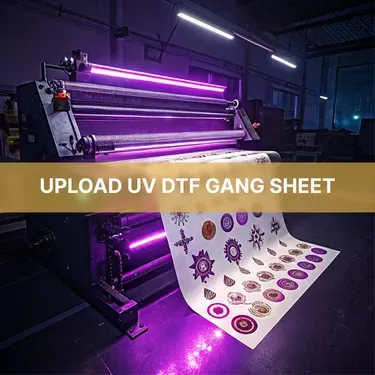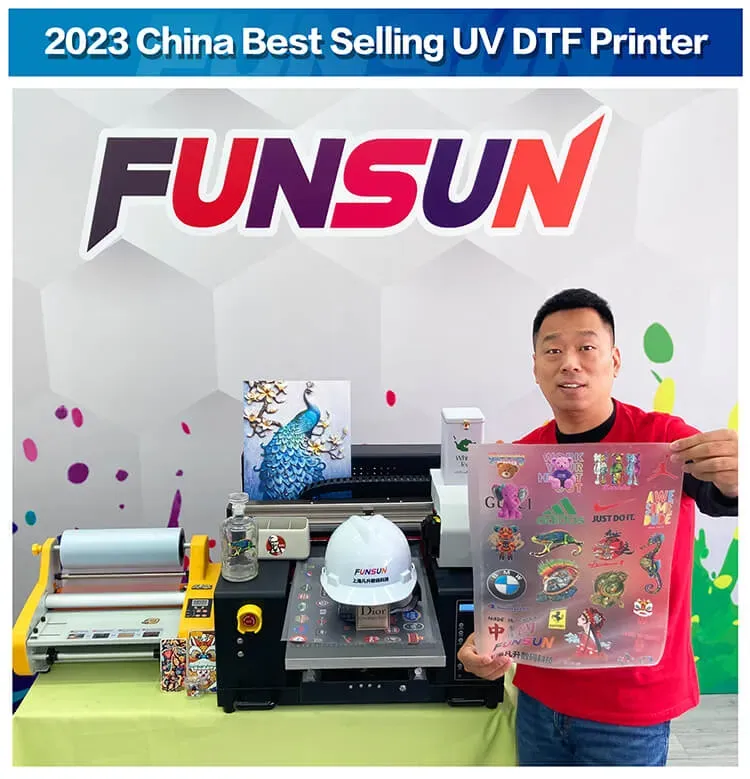UV DTF Gangheet: Understanding Its Mechanisms and Benefits
UV DTF Gangheet represents a cutting-edge advancement in UV printing technology that is transforming the landscape of direct-to-film printing. By utilizing ultraviolet light to cure inks onto a transfer film, this innovative process not only enhances print quality and durability but also introduces sustainable printing solutions that are increasingly important in our eco-conscious world. Unlike conventional methods, the benefits of UV DTF printing include exceptional vibrancy and resilience, making it a preferred choice for various applications. As industries seek ways to improve efficiency and reduce environmental impact, understanding how UV DTF printing works becomes essential. In this article, we dive deep into the mechanics, advantages, and implications of UV DTF Gangheet in modern printing.
Exploring UV Direct-to-Film technology, often abbreviated as UV DTF, unveils a remarkable approach to ink-based production that merges innovation with sustainability. This method, frequently characterized as direct-to-film printing, employs UV curing processes that enhance the durability and quality of prints while minimizing the ecological footprint associated with traditional printing techniques. With its ability to produce vibrant designs on diverse substrates, this technique opens doors to numerous industries looking for high-quality, eco-friendly solutions. Understanding the mechanics of this advanced printing method, alongside its numerous benefits, provides essential insights for businesses aiming to leverage cutting-edge printing technology.
Understanding UV Printing Technology
UV printing technology is revolutionizing the world of graphic arts by providing faster, more efficient printing methods that yield exceptional results. Unlike traditional printing methods, UV printing utilizes ultraviolet light to instantly cure inks as they are printed onto the chosen substrates. This results in prints with vibrant colors and sharp details, which are resistant to wear and tear. The quick curing process not only improves efficiency but also enhances the overall quality of the printed materials.
As the demand for high-quality prints increases, understanding UV printing technology is essential for businesses looking to stand out. With this method, graphics can be printed on a wider array of materials, including plastics, wood, and metals, thus broadening the scope for creative projects. This versatility makes UV printing suitable for various applications, spanning from promotional products to unique art installations.
The Advantages of Direct-to-Film Printing
Direct-to-film (DTF) printing represents a significant advancement within the realm of digital printing. One key benefit is its ability to produce high-quality prints on a variety of materials, including textiles and rigid surfaces. DTF printing employs a specialized film that effectively captures intricate designs, allowing for vibrant colors and fine details that last longer than traditional methods. This durability is particularly beneficial in industries where wear and exposure are factors, such as fashion and outdoor advertising.
Moreover, DTF printing is less labor-intensive compared to traditional methods like screen printing, which often requires extensive setup and manual intervention. The efficiency derived from this technology means that businesses can quickly adapt to changing market demands, producing smaller runs of customized designs without incurring prohibitive costs or time delays. This adaptability is essential in today’s fast-paced commercial environment, giving businesses a competitive edge.
How UV DTF Gangheet Revolutionizes Printing
The term UV DTF Gangheet stands out in contemporary print discussions, reflecting a growing interest in UV Direct-To-Film technology. This innovative approach combines the benefits of DTF printing with the rapid curing of inks using UV light. The result is a unique method that delivers prints with enhanced durability, vibrant colors, and brilliant details that maintain their integrity over time. This technique represents a shift towards more advanced printing solutions that cater to diverse materials and industries.
Incorporating UV DTF technology into one’s printing repertoire not only boosts productivity but also aligns with the sustainability trends seen in modern printing practices. With lower volatile organic compounds (VOCs) emitted than conventional inks, UV DTF Gangheet supports eco-friendly initiatives without compromising on quality or performance. As businesses seek to enhance their environmental responsibility, adopting this technology could significantly contribute to a more sustainable future.
Exploring the Benefits of UV DTF Printing
The benefits of UV DTF printing are extensive and cater to various industries aiming for high-quality output. One notable advantage is the ink’s rapid curing process, which allows for faster turnaround times on projects. Businesses can expect improved production schedules, minimizing downtime and increasing overall output without sacrificing quality. This is particularly beneficial for companies dealing in high-volume productions or custom prints.
Additionally, the durability of prints produced by UV DTF technology cannot be overstated. The UV-cured ink creates a strong bond with the substrate, making prints resistant to scratching, fading, and environmental wear. This makes UV DTF printing an ideal choice for products that demand longevity, such as outdoor signage and promotional materials that will endure various conditions. As industries increasingly seek reliable printing solutions, the advantages of UV DTF technology become a key consideration.
Sustainable Practices in UV DTF Printing
Sustainability has become a cornerstone of modern printing practices, and UV DTF printing aligns well with eco-friendly initiatives. The technology utilizes inks with reduced environmental impact, emitting fewer VOCs compared to traditional printing methods. This characteristic not only complies with stricter regulatory standards but also meets consumer demand for eco-conscious products. As companies strive to minimize their ecological footprints, adopting UV DTF printing can contribute significantly to sustainability goals.
Moreover, advancements in materials and practices related to this printing technology are continually evolving. New developments focus on biodegradable inks and waste reduction strategies within the UV DTF printing process. By investing in sustainable practices, printers can not only enhance their brand image in a competitive market but also attract a growing base of environmentally conscious consumers who prioritize sustainable offerings.
The Versatility of UV DTF Printing
One of the standout features of UV DTF printing is its remarkable versatility across various applications. This printing method allows for designs to be transferred onto an extensive range of materials, including fabrics, plastics, and metals. Industries such as fashion, automotive, and promotional items all leverage UV DTF printing to meet diverse consumer needs. Whether creating customized apparel or unique signage, this technology supports imaginative solutions to modern challenges.
In addition to various substrates, UV DTF printing accommodates complex designs with ease, allowing businesses to simplify processes that typically require multiple steps. This flexibility not only enhances creative possibilities but also caters to the demand for personalization in the consumer market. By utilizing UV DTF printing technology, companies can provide tailored products that stand out, thus reinforcing brand identity and consumer loyalty.
Frequently Asked Questions
What is UV DTF Gangheet and how does it work?
UV DTF Gangheet refers to UV Direct-to-Film printing, a method that uses ultraviolet light to cure inks applied to a transfer film. The process begins with designing the image on a special film, printing it with UV DTF inks, and instantly curing the inks with UV light. This technique results in vibrant, durable prints suitable for various surfaces.
What are the benefits of UV DTF printing in industrial applications?
The benefits of UV DTF printing in industrial applications include exceptional durability, quick production times, and versatility in substrate compatibility. The prints resist fading and scratching, making them ideal for high-traffic items like signage and promotional materials, ensuring long-lasting visual appeal.
How does UV printing technology enhance sustainability in the printing industry?
UV printing technology, specifically UV DTF printing, enhances sustainability by using inks that emit fewer volatile organic compounds (VOCs) during the curing process. This eco-friendly approach aligns with industry trends towards sustainable printing practices, providing businesses with a responsible option for producing high-quality prints.
Can UV DTF Gangheet be used on various materials?
Yes, UV DTF Gangheet can be used on a wide variety of materials, including fabrics, plastics, and metals. This versatility allows users to print intricate designs on different substrates, catering to numerous industries such as fashion, signage, and technology.
What makes UV DTF printing more effective than traditional methods?
UV DTF printing is more effective than traditional methods due to its quick curing process, which allows for immediate handling of prints without waiting for drying times. The result is high-quality, vibrant prints that are durable and resistant to environmental factors, setting it apart from traditional printing techniques like screen printing and heat transfers.
What recent developments in UV DTF printing technology should businesses be aware of?
Recent developments in UV DTF printing technology include innovations in biodegradable inks and improvements in the efficiency of the curing process. These advancements focus on reducing waste and enhancing print quality, reflecting the industry’s commitment to sustainability while meeting the demands for high-performance printing.
| Key Aspect | Details |
|---|---|
| What is UV DTF Printing? | A method using UV light to cure inks on transfer film for vibrant, durable prints. |
| How Does it Work? | Involves ink composition, the printing process, and transfer process, ensuring quality and adaptability. |
| Importance of UV DTF Technology | 1. Durability: Resistant to fading and scratching. 2. Eco-Friendly: Reduced VOC emissions. 3. Versatility: Suitable for various substrates and industries. |
| Recent Developments | Innovations include biodegradable inks and waste reduction initiatives to align with sustainability efforts in printing. |
Summary
UV DTF Gangheet represents a significant advancement in printing technology, embodying key characteristics of durability, versatility, and eco-friendliness. This innovative approach not only enhances print quality but also minimizes environmental impact, catering to the diverse needs of modern consumers. As demand grows for high-quality and sustainable printing solutions, understanding the advancements in UV DTF technology becomes essential. With ongoing developments, stakeholders across industries can benefit from informed choices based on the promising applications of UV DTF printing.







